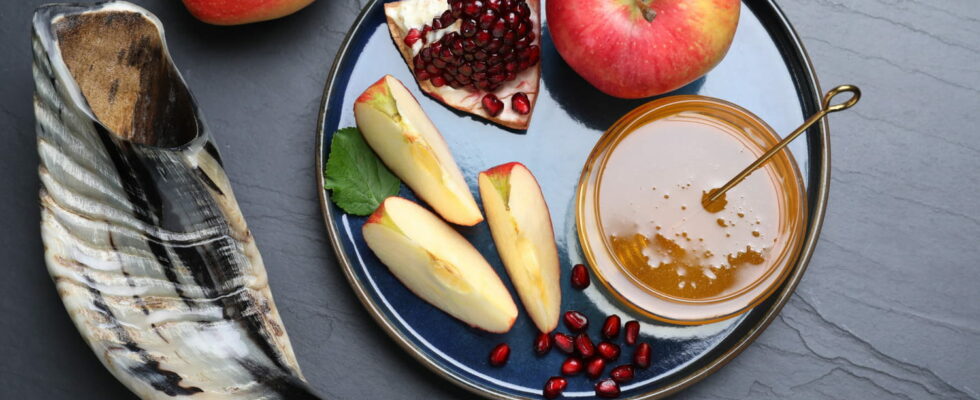In 2024, Rosh Hashanah takes place from October 2 to 4. Here are the traditions of this religious holiday for a year “sweet as honey”.
There Rosh Hashanah holidaywhich literally means “head of the year”, celebrates the Jewish New Year and the start of the new year in the Hebrew calendar. This religious festival commemorates the creation of the world and the day of judgment. During this day, many traditions and customs are to be respected by practitioners.
What are the dates of Rosh Hashanah in 2024?
In 2024, the Rosh Hashanah holiday begins on Wednesday October 2 in the evening, and ends on Friday October 4 at nightfall. Party times depend on sunset time, and differ depending on the city. This year, the Jewish New Year celebration continues with Shabbat which ends on Saturday evening.
Why do we celebrate the year 5785?
The holiday of Rosh Hashanah corresponds to the year 5785 of the Hebrew calendar. Unlike the Gregorian calendar, the Hebrew calendar is lunisolar. Rosh Hashanah therefore corresponds to the anniversary of the creation of Adam and Eve.
What is the meaning of Rosh Hashanah?
Rosh Hashanah literally means “head of the year.” The Jewish New Year refers to the creation of Adam and Eve. Mentioned in the Bible under the name of “ringing day”, Rosh Hashanah is a moment of introspection since it involves, for practitioners, taking stock of the year and making good resolutions for the following year.
The day before Rosh Hashanah, as with most Jewish holidays, practicing Jews can immerse themselves in a Mikveh, the ritual bath. This purification rite allows you to pray in the best conditions on the day of judgment. Participating in the ceremony at the synagogue is also an important time of Rosh Hashanah, where the Torah is read. It is customary, during the Jewish New Year festivities, to listen to the ringing of the shofar, musical instrument made from a ram’s horn, to repent, during the two days of festivals.
Another symbolic ritual for the faithful, the Tashlikh which consists of going on the afternoon of Rosh Hashanah near a stream in order to throw pieces of bread or stones. A way to symbolically shed the sins of the past year. We throw the stones into a lake (or into the sea for those who are close to it), to get rid of all our bad deeds.
Finally, as with most Jewish holidays, the lighting of the candles on the evening of the holiday is accompanied by a festive meal and blessings over wine and bread. Designating bread in Hebrew, (traditionally a brioche bread) on this day the Hallah has a circular shape to evoke the cycle of the year. Traditionally, to make the year sweet (like honey), it is customary to dip an apple in honey.
What to put on the table, on the Seder plate of Rosh Hashanah?
On the occasion of the Rosh Hashanah holiday, several prayers are recited over different foods placed in a Seder plate :
- Squash or leek
- Spinach or chard
- A fish head
- Sesame
- Dates, figs (for the “new” fruit)
- The pomegranate, with many seeds, symbolizes abundance
- Apple dipped in honey for a sweet year
- Jujube (also called Chinese date)
What meal during Rosh Hashanah?
Mild and sweet foods are favored during the Rosh Hashanah celebration. Apples dipped in honey, dates, figs, squash and pomegranates garnish the tables. According to customs, families cook couscous, lamb and potatoes, or Tafina, a specialty made from simmered meat, prunes, wheat, potatoes and eggs…
This is through the use of the expression “Shana tova oumetouka“, in other words “happy new year” that the Jews wish each other a happy new year. This is, however, not the only expression that you will be able to hear. Before Rosh Hashanah, the Jews, for example, willingly use the formula “Ketiva va’hatima tova“, Or “Gmar Hatima Tova”meaning “A good inscription and a good seal in the book of life”. As with all Jewish holidays, we can also simply wish a happy “Hag Saméah” holiday. The expression Shana Tova is also used throughout Rosh Hashanah and until Yom Kippur, to wish your loved ones a happy new year.
